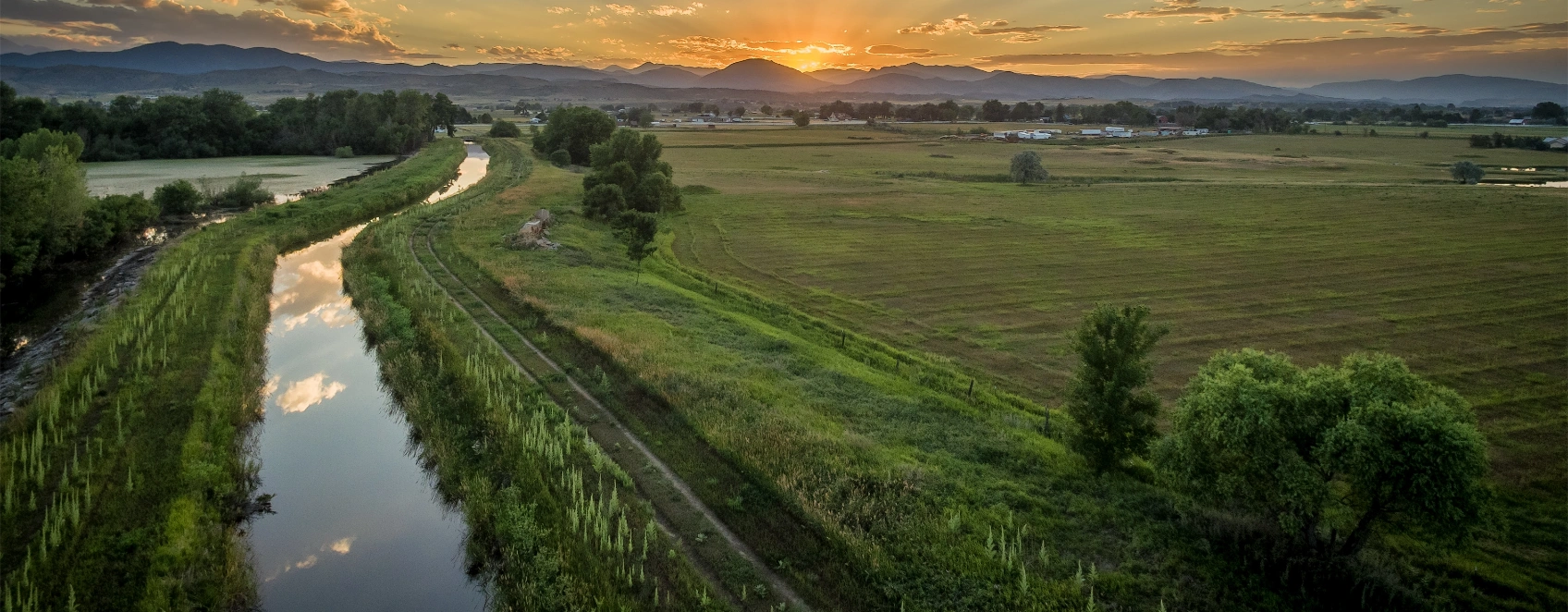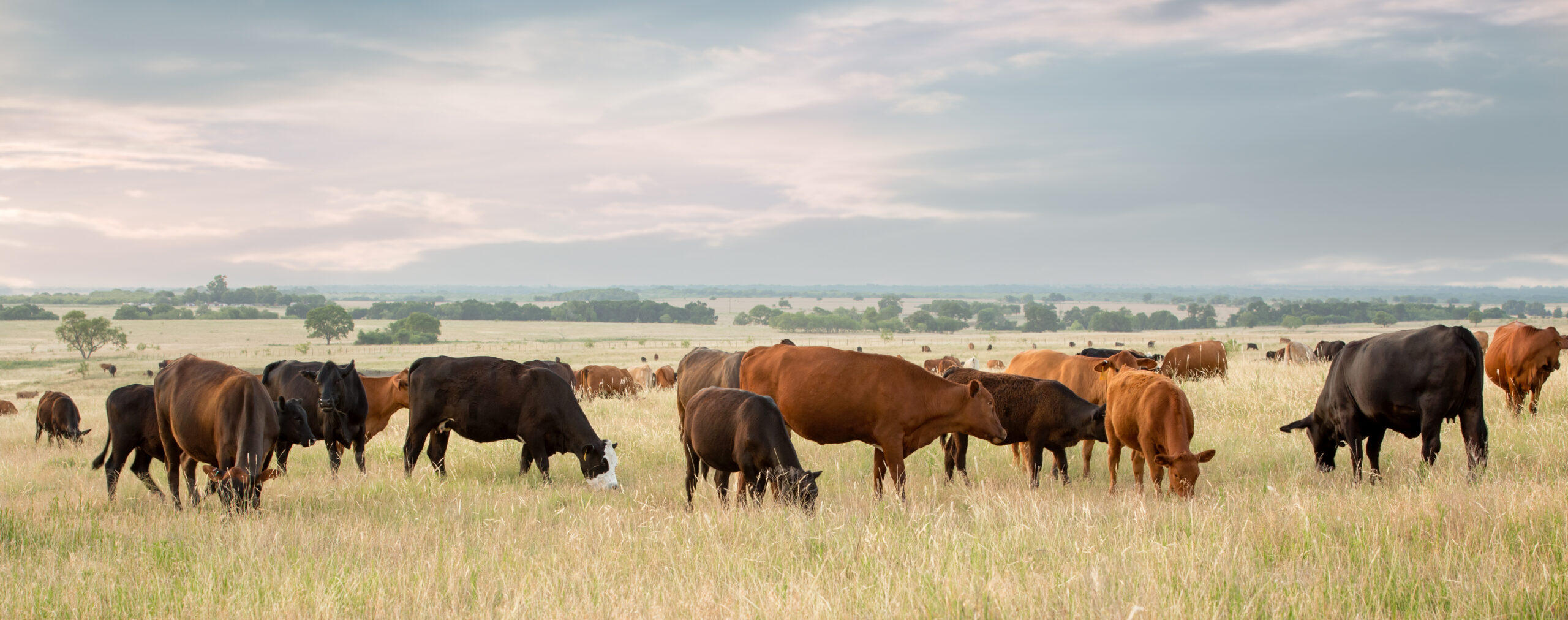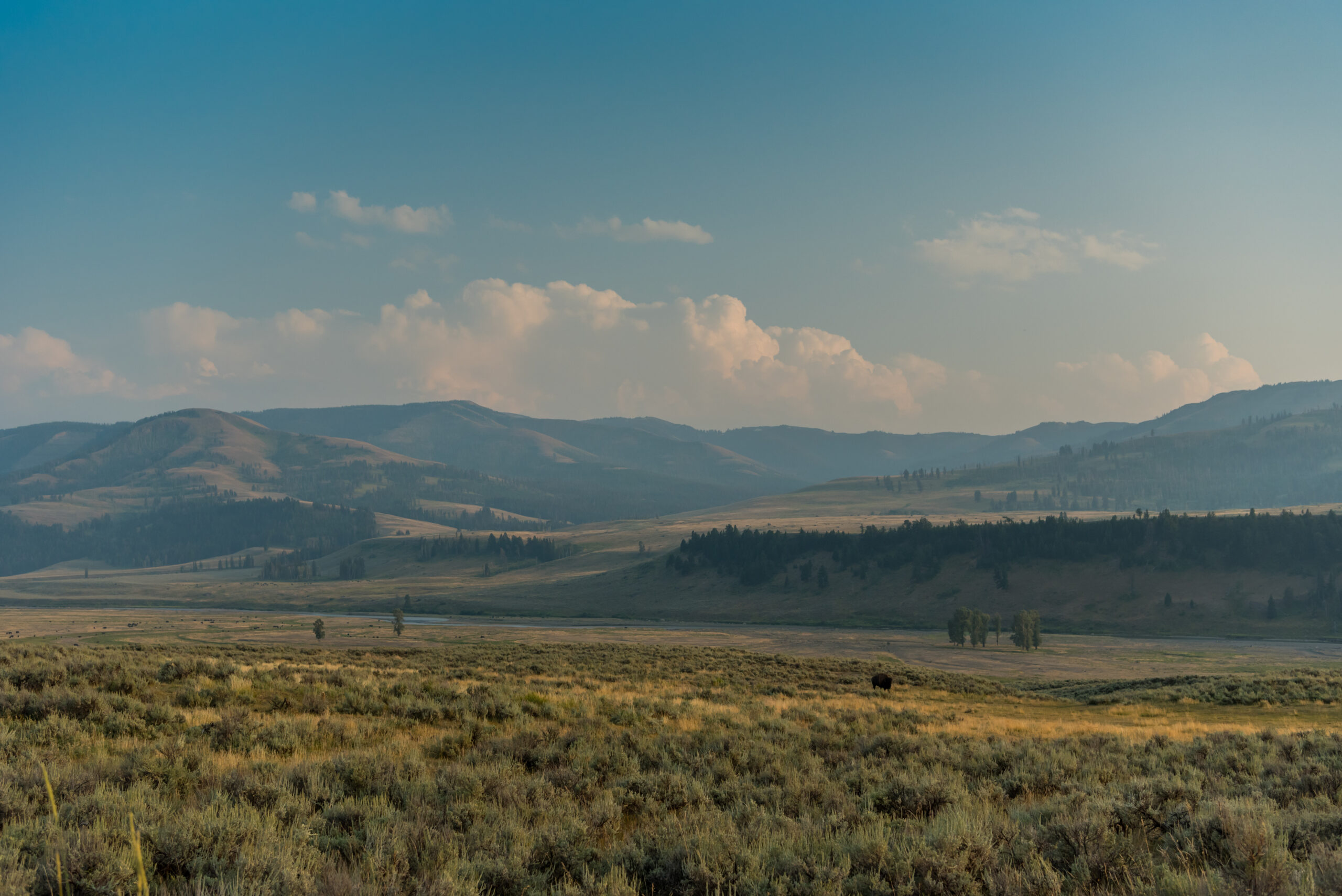
Introduction
Historically, ranchland has remained outside the scope of institutional investment due to insufficient deal flow, management complexities, and market dynamics. Despite representing the largest segment of U.S. agricultural land by acreage, the institutional market has overlooked ranchland while embracing Farmland and Timberland. However, conditions have shifted dramatically.
Today, a convergence of generational transfer, rising land values, supply-demand imbalances, and natural resource scarcity creates a unique window for institutional entry. For investors pursuing the right strategy—focused on large-scale ranch properties—the once-insurmountable barriers to ranchland investment have become navigable. This paper explores these key drivers in depth and demonstrates why now is the pivotal moment for institutional investors to consider large-scale ranchland as a viable asset class.
-
Historical Barriers to Ranchland Institutionalization
Limited Deal Flow and Transaction Size
Lower Land Values
Throughout much of the 20th century, the values of large ranch properties remained below the threshold required for institutional investment. From the 1980s to the early 2000s, estate tax exemptions ranged between $2.5 million and $3.5 million per spouse. At the same time, average ranchland prices were relatively low, making it feasible for families to transfer properties across generations without significant tax burdens.
For context, the National Agricultural Statistics Service (NASS) reported that in 1998, the average price per acre of pastureland in the U.S. was approximately $500. This kept the total value of even large ranches below the thresholds that would trigger significant tax liabilities.
Higher Profit Margins
Historically, ranching was a more profitable enterprise. The livestock industry was less consolidated, and ranchers enjoyed greater bargaining power with meat processors. In the 1970s and 1980s, profit margins for livestock operations were consistently higher due to more favorable market conditions.
Moreover, input costs for feed, fuel, and labor were lower, enabling ranchers to sustain operations without financial strain. As a result, fewer families were forced to sell their properties to cover operational deficits.
Family Continuity
Cultural and economic incentives strongly favored keeping ranch properties within families. According to the USDA, as of the early 2000s, 96% of ranches were family-owned and operated. These properties often represented multi-generational legacies, with ownership dating back to the late 1800s.
The desire to preserve family heritage, combined with manageable estate taxes and profitable operations, resulted in limited deal flow for large ranches. The institutional market, which requires consistent availability of high-value assets, found little opportunity in this landscape.
Management Complexities
The operational challenges associated with managing large ranches further deterred institutional investors. Effective ranch management requires specialized knowledge in grazing practices, livestock operations, and land stewardship. Unlike Farmland and Timberland, where large-scale management companies provide professional oversight, ranchland lacked scalable management solutions.
A report by the National Agricultural Statistics Service (NASS) highlighted that fewer than 5% of ranches employed full-time professional management teams. This absence of centralized management firms capable of overseeing portfolios of ranches restricted institutional interest.
Technological Lag
Until recently, ranching operations relied on traditional, low-efficiency practices. The absence of advanced technologies for rangeland health monitoring, livestock tracking, and ecological assessment limited the potential for operational improvements.
Advancements in remote sensing, satellite imagery, and data analytics have now revolutionized rangeland management. According to research from the Society for Range Management, modern tools can now measure forage availability, soil health, and water resources with high precision. Big data analytics enable real-time decision-making, optimizing grazing patterns and resource allocation to improve productivity and ecological sustainability.
-
The Current Environment: Why Deal Flow is Now Feasible
Generational Transfer Driving Large-Scale Transactions
Rising Land Values
The landscape of ranch valuations has changed dramatically. Based on the National Ranchland Property Index, ranchland values have appreciated by 4.2 times since 1998. The average price per acre of U.S. pastureland increased from $500 in 1998 to approximately $2,100 in 2023.
This appreciation has pushed many large ranches well above current estate tax exemption limits. In 2023, the exemption limit was $12.92 million per individual. However, this exemption is set to sunset in 2026, reverting to approximately $5 million per individual. As a result, heirs to large ranches face significant tax liabilities, often necessitating the sale of properties.
For example, a ranch valued at $20 million today could incur an estate tax liability of $6 million or more once the exemption decreases. This looming tax burden is expected to drive an unprecedented wave of high-value ranch properties to market.
Profit Margin Compression
The economic viability of family-run ranches has been severely impacted by profit margin compression. The consolidation of the meat packing industry means that four companies—Tyson Foods, Cargill, JBS, and National Beef—control over 80% of U.S. beef processing. This oligopoly has reduced the prices ranchers receive for their livestock, while input costs have steadily increased.
According to the USDA Economic Research Service (ERS), the cost of feed and fuel has risen by over 60% in the past two decades. As a result, net profit margins for many ranches have fallen to between 1% and 2%. This financial strain makes it increasingly difficult for families to sustain operations, driving more properties to market.
Changing Family Dynamics
Family dynamics are also shifting, reducing the likelihood of generational continuity in ranch ownership. A survey by the American Farmland Trust found that only 28% of ranch heirs are interested in continuing family operations. The challenges of low profit margins, high operational demands, and urban career opportunities have led many younger generations to seek alternative livelihoods.
Furthermore, rural populations are declining. According to the U.S. Census Bureau, the rural population decreased by 12% between 2010 and 2020. This demographic shift exacerbates the lack of successors willing to take on ranching operations, increasing the availability of high-value properties for sale.
-
Increased Deal Flow in the Large-Scale Segment
Current Estimated Deal Flow
The current annual deal flow for large-scale ranch properties, defined as those valued at $15 million or more, is estimated to be between $6.1 billion and $8.8 billion. This figure is derived using two primary methods:
- Brokerage Method: Discussions with leading ranch brokerage firms indicate an average of $2 billion in annual transactions. With an estimated 33% market share, this implies a total market size of approximately $6 billion.
- Montana Land Source Method: Analysis of active listings in Montana for properties over 200 acres as of July 2024 showed $2.02 billion in listings. Adjusting for historical turnover and Montana’s 10.8% share of the regional market yields an annual deal flow estimate of $8.9 billion.
By 1) averaging these methods, and 2) assuming Ranchland comprises 50% of transaction volume alongside Farmland, and 3) using the USDA’s reported 25% of market values held in large ranches, the baseline annual deal flow for large-scale ranches is approximately between $750 million and $1.1 billion.
Future Projected Deal Flow
Over the next 30 years, an estimated $750 billion in ranchland assets is expected to change hands due to generational turnover and estate tax pressures, of which, $150 billion ($5 billion in deal flow per year assuming linear transaction volume) is estimated to be in the “Large Ranch” market segment. This projection is based on current USDA land value data and reflects the impending transition driven by the aging rancher population, where over 40% of ranch owners are 65 years or older. Accelerating mortality rates further contribute to this trend, ensuring a consistent pipeline of high-value ranch properties entering the market.
-
Supply and Demand Dynamics: Increasing Scarcity of Resources
Shrinking Land Base
Ranchland is a finite resource, and its availability is rapidly declining. The U.S. is losing 2 million acres of rangeland annually due to:
- Urban Development
- Drought and Desertification
- Conversion to Cropland
Between 1997 and 2022, the Rocky Mountain region alone saw a cumulative loss of 21.7 million acres of ranchland. This increasing scarcity makes remaining high-quality ranch properties more valuable over time.
Water Scarcity
Water scarcity is one of the most pressing issues facing ranchland operations. According to the U.S. Geological Survey (USGS), groundwater depletion rates have increased by 25% since 2000. The Colorado River Basin, a critical water source for Western ranches, is experiencing historic lows, affecting 40 million people and 5 million acres of farmland.
Ranches with sustainable water management practices are becoming increasingly valuable as water becomes scarcer.
Rising Global Demand for Commodities
The OECD-FAO Agricultural Outlook 2023-2032 projects that global beef consumption will grow by 6.2 billion pounds annually. This rising demand, coupled with decreasing rangeland acreage, supports higher beef prices and long-term appreciation in ranchland values.
Energy Development Opportunities
The accelerating need for domestic energy production—driven by AI, data centers, and renewable energy goals—creates new opportunities for ranchland investment. Large ranch properties can accommodate small-scale solar, wind, and geothermal projects while maintaining their core agricultural operations.
- Biodiversity Offsets: Sustainable ranch management practices can provide natural biodiversity offsets for energy projects, enhancing environmental compliance.
- Reliable Revenue Streams: Energy development offers consistent, diversified income for ranch portfolios, improving overall investment returns.
Conclusion
The confluence of generational transfer, rising land values, resource scarcity, and technological advancements creates a compelling case for institutional investment in large-scale ranchland. Historical barriers to institutionalization have given way to a market environment characterized by increased deal flow and enhanced management capabilities.
For institutional investors pursuing the right strategy, large-scale ranchland is no longer just feasible—it is a strategically advantageous and timely investment opportunity.
IMPORTANT INFORMATION
Copyright© Ranchland Capital Partners, LLC 2024. All rights reserved.
This material is proprietary and may not be reproduced or distributed without Ranchland’s prior written permission. It is delivered on an “as is” basis without warranty or liability. Ranchland accepts no responsibility for any errors, mistakes, or omissions or for any action taken in reliance thereon. All charts, graphs, and other elements contained within are also copyrighted works and may be owned by Ranchland or a party other than Ranchland. By accepting the information, you agree to abide by all applicable copyright and other laws, as well as any additional copyright notices or restrictions contained in the information.
The views and information provided were created at various dates in time and unless otherwise indicated, are subject to frequent changes, updates, revisions, verifications, and amendments, materially or otherwise, without notice, as data or other conditions change. There can be no assurance that terms and trends described herein will continue or that forecasts are accurate. Certain statements contained herein are statements of future expectations or forward-looking statements that are based on Ranchland’s views and assumptions as of the date hereof and involve known and unknown risks and uncertainties that could cause actual results, performance, or events to differ materially and adversely from what has been expressed or implied in such statements. Forward-looking statements may be identified by context or words such as “may, will, should, expects, plans, intends, anticipates, believes, estimates, predicts, potential, or continue” and other similar expressions. Neither Ranchland, its affiliates, nor any of Ranchland’s or its affiliates’ respective advisers, members, directors, officers, partners, agents, representatives, or employees, or any other person, is under any obligation to update or keep current the information contained in this document.
This material is for informational purposes only and is not an offer or a solicitation to subscribe to any fund and does not constitute investment, legal, regulatory, business, tax, financial, accounting, or other advice or a recommendation regarding any securities of Ranchland, of any fund or vehicle managed by Ranchland, or of any other issuer of securities. No representation or warranty, express or implied, is given as to the accuracy, fairness, correctness, or completeness of third-party sourced data or opinions contained herein, and no liability (in negligence or otherwise) is accepted by Ranchland for any loss howsoever arising, directly or indirectly, from any use of this document or its contents, or otherwise arising in connection with the provision of such third-party data.
Featured Articles

Using Heavy Tail Optimization to Evaluate the 2023 Milliman Study Allocation

The Relationship between Cattle, Sustainability, and Ecosystem Function

Hunting and Conservation: An Integral Relationship

Ranchland Economics under the New Trump Administration: An Initial Look.

The Changing Landscape of Ranchland Ownership: Understanding the Forces Behind a Generational Land Transfer
